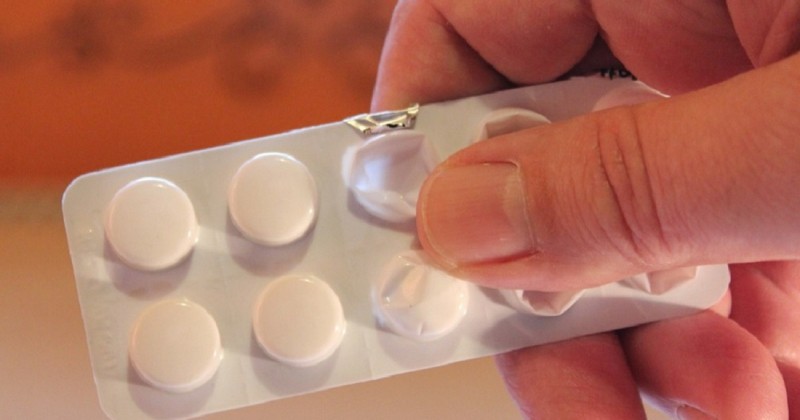Thioridazine: uses and side effects of this psychotropic drug.

An antipsychotic drug of the phenothiazine group, used to treat various disorders.
Thioridazine is a drug that acts as an antipsychotic (first generation) and as an anxiolytic. (first generation) and as an anxiolytic, decreasing anxious and psychotic symptoms. It is mainly used for schizophrenia when other antipsychotic drugs have not been of benefit to the patient.
However, its indications go beyond this, and it is also used for conduct disorders, psychotic depression and anxiety, among others. We will also learn about its general characteristics, mechanism of action, pharmacokinetics and adverse reactions.
- Related articles: "We review the classes of psychotropic drugs, their uses, composition and possible risks."
Thioridazine: general characteristics.
Thioridazine is an anxiolytic and antipsychotic drug; specifically, it is a phenothiazine (a group of antipsychotic drugs). Chemically it is similar to mesoridazine (one of its metabolites).
Thioridazine is indicated for the treatment of some psychotic disorders such as schizophrenia, for anxiety associated with depression, behavioral disorders in children and dementia. What it does is to decrease the abnormal excitation of the brain.
In addition, it is the phenothiazine with the least extrapyramidal effects, that is, movement-related disorders, which arise as a type of side effect. However, its sedative and anxiolytic effects are important..
Contraindications to thioridazine are: having hypersensitivity to thioridazine itself or to other phenothiazines, severe CNS (Central Nervous System) depression, comatose states, as well as having hypotension or severe cardiac hypertension.
Mechanism of action of this drug
The mechanism of action of thioridazine is the blockade of postsynaptic dopaminergic D2 receptors in the mesolimbic system of the brain.. The blockade also explains the extrapyramidal effects observed with thioridazine intake.
On the other hand, thioridazine also blocks cholinergic (acetylcholine) and alpha-adrenergic (adrenaline) receptors, leading to side effects such as sedation, muscle relaxation and Cardiovascular effects (e.g. hypotension, alterations in the electrocardiographic profile and reflex tachycardia).
Indications: disorders in which it is used
Thioridazine is an antipsychotic that is indicated for the treatment of psychotic disorders, such as schizophrenia or psychotic depression. In some cases it is also used for severe behavioral disorders in children (e.g. aggressiveness and hyperexcitability), attention span difficulties, dementia and anxiety associated with depressive disorder.
Specifically, thioridazine is used to control the manifestations or symptoms of psychotic disorders.. In the case of schizophrenia, thioridazine is used as an alternative treatment in cases where other drugs have not previously produced good results or have caused serious side effects in the patient. It is also indicated for sleep disturbances and fears in the elderly.
As for depression, it is indicated for moderate or severe short term depressionswith accompanying symptoms such as anxiety.
Thioridazine should be used with great caution in patients with Parkinson's disease or liver disease.
Side effects
The adverse reactions that thioridazine can cause, the same as other phenothiazines, include major cardiovascular reactions. It is for this reason that thioridazine is prescribed to patients who have not responded to other types of antipsychotic drugs.
Also may cause sedation, dry mouth, vertigo, orthostatic hypotension, skin rashes, visual disturbances, ejaculation disorders, ejaculation disturbances, andIt can also produce sedation, dry mouth, vertigo, orthostatic hypotension, skin rashes, vision disorders, ejaculation disorders, photosensitivity, urinary incontinence and galactorrhea (occasional).
In pregnancy and lactation, the use of thioridazine is not recommended. In case of driving, great caution should be exercised, since the drug can generate important effects such as drowsiness and reduced reaction capacity.
It can also cause visual disturbances (blurred vision, decreased night vision and scotoma), although these may disappear if thioridazine is withdrawn early. However, vision does not always improve, despite discontinuation of the drug, as has been seen in some cases.
Some data
Studies conducted with thioridazine showed that 60% of patients taking the drug suffered from sexual dysfunction (compared to 25% of patients (compared to 25% of patients treated with other antipsychotics).
Another side effect that can occur, tardive dyskinesia, occurs in 4% of cases treated with thioridazine, annually (during the first 5-6 years of treatment).
Pharmacokinetics
Thioridazine is administered orally and is rapidly absorbed. Therapeutic effects are usually maximal 6 weeks after initiation of thioridazine treatment.. Phenothiazines such as thioridazine cross the blood-brain barrier and are distributed to all body tissues.
It also crosses the placenta and is excreted in breast milk, so caution should be exercised in its use.
How is it taken?
Thioridazine is usually taken in tablet form by mouthIt is usually taken 2 to 4 times a day (between 50 and 800 mg/day/orally). It is recommended to take it at the same time every day, and to consult the prescription instructions for any questions not previously answered by the doctor or pharmacist.
Generally the doctor prescribes thioridazine at a low dose and progressively (and according to the patient's needs) increases it gradually, until the symptoms are under control. Subsequently, with symptoms under control, the physician is likely to reduce the dose.
Although thioridazine can help to control or alleviate certain symptoms, it does not "cure" any pathology; that is to say, it will always be advisable to follow a psychological treatment. it will always be advisable to follow a psychological treatment combined with pharmacological treatment.. In addition, having a network of family (and friends) support will always be important for the treatment and improvement of the patient.
Bibliographic references:
- MedlinePlus. (2017). Thioridazine.
- Stahl, S.M. (2002). Essential psychopharmacology. Neuroscientific bases and clinical applications. Barcelona: Ariel.
- Vademecum. (2015). Thioridazine.
(Updated at Apr 14 / 2024)